
| Speckled Line-blue (previously known as Lampides florinda) POLYOMMATINI, POLYOMMATINAE, LYCAENIDAE, PAPILIONOIDEA | (donherbisonevans@yahoo.com) and Stella Crossley |
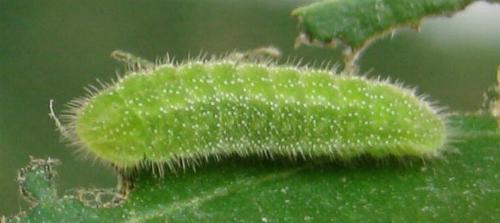
(Photo: courtesy of Wes Jenkinson)

| Speckled Line-blue (previously known as Lampides florinda) POLYOMMATINI, POLYOMMATINAE, LYCAENIDAE, PAPILIONOIDEA | (donherbisonevans@yahoo.com) and Stella Crossley |

(Photo: courtesy of Wes Jenkinson)
This Caterpillar is initially green with white spots and short dense white hair over most of the body, and black hair on the thorax and back. It is sometimes attended by black ants. It is known to feed on :

The pupa is green, and attached to the foodplant by anal hooks and a silk girdle.
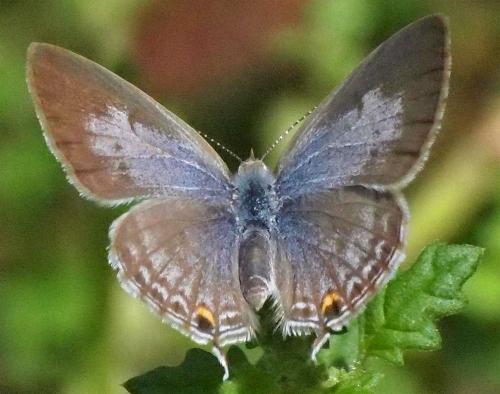
The female adults are brown on top with a blue sheen over the basal areas of the wings.
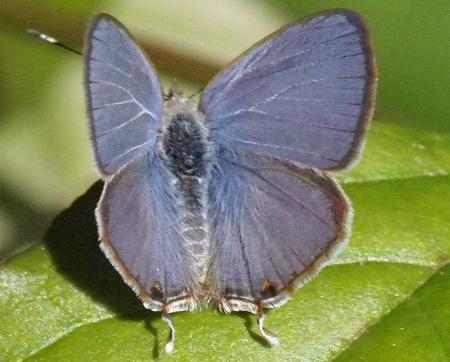
The males are more homogeously blue on the upper surfaces. Underneath, both sexes are fawn with rows of darker spots. Both upper and lower surfaces of each hindwing have a short thin tail between a pair of black spots. The butterflies have a wing span of about 2 cms.
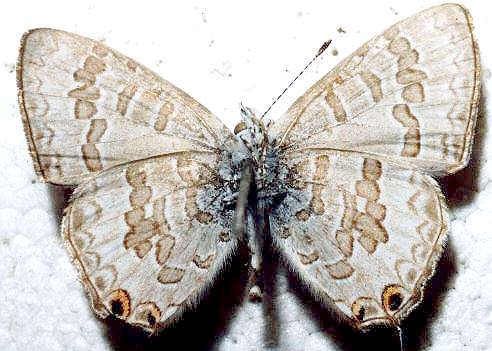
The eggs are laid singly on leaves of a foodplant. The eggs are spherical and flattened, They are initially white, maturing to green, and have a rough surface.

The species occurs as various subspecies in south-east Asia, including
and in Australia as :
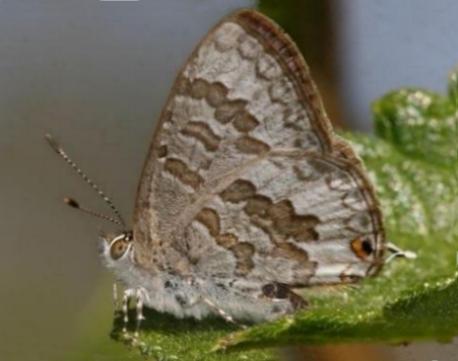
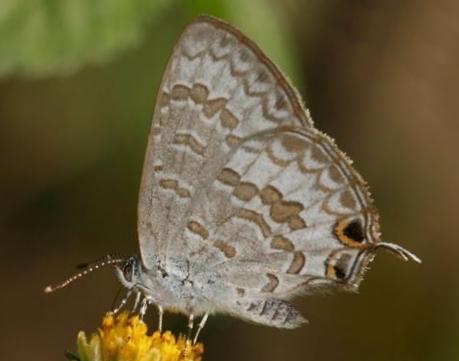
Further reading :
Michael F. Braby,
Butterflies of Australia,
CSIRO Publishing, Melbourne 2000, vol. 2, pp. 801-802.
Arthur G. Butler,
On a Collection of Lepidoptera obtained by the Rev. S. J. Whitmee
from Lifu (Loyalty Group), with Descriptions of new Species,
The Annals and Magazine of Natural History,
Series 4, Volume 20 (1877), p. 354, No. 19 (16).
Roger Grund & Frank Jordan,
A new hostplant for the Speckled Line-blue butterfly
(Catopyrops florinda halys) in the Brisbane area,
Butterfly and Other Invertebrates Club
Newslettter,
Issue 49 (June 2008), pp. 11-14.
Wesley Jenkinson,
Life history notes on the Speckled Line-blue, Catapyrops florinda halys
(Butler, 1877) Lepidoptera: Lycaenidae,
Butterflies and Other Invertebrates Club,
Metamorphosis Australia,
Issue 80 (March 2016), pp. 19-22.
 caterpillar |  butterflies |  Lepidoptera |  moths |  caterpillar |
(updated 30 March 2011, 5 May 2025)